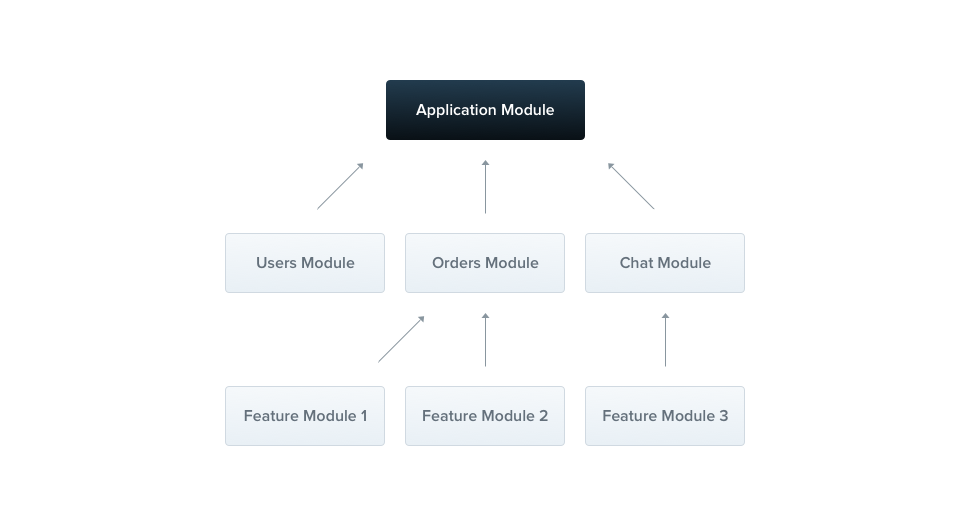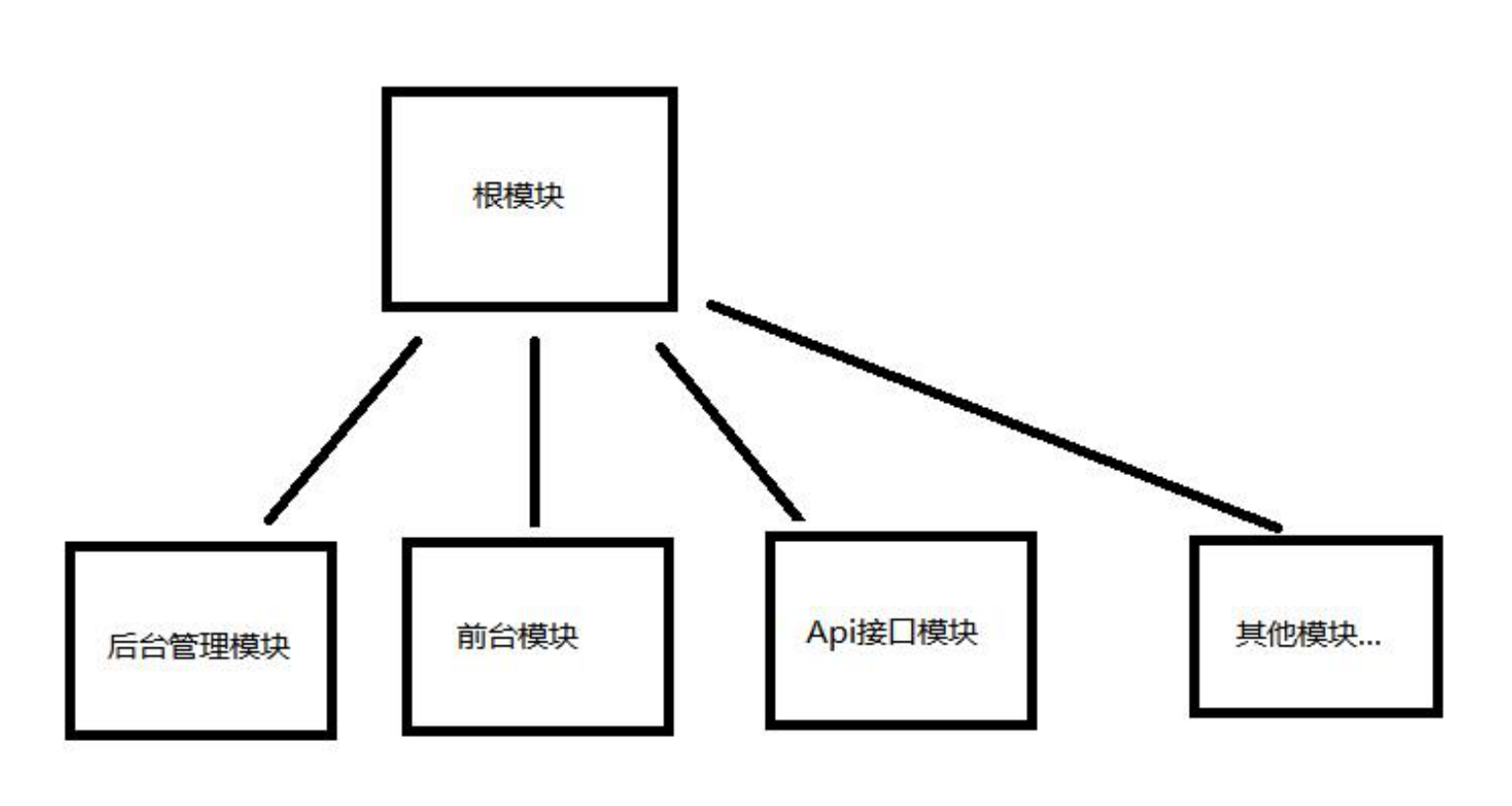一、关于 NestJS 中的模块
- 模块是具有 @Module() 装饰器的类。 @Module() 装饰器提供了元数据,Nest 用它来组织应用 程序结构
- https://docs.nestjs.com/modules

- 每个 Nest 应用程序至少有一个模块,即根模块。根模块是 Nest 开始安排应用程序树的地方。事实上,根模块可能是应用程序中唯一的模块,特别是当应用程序很小时,但是对于大型程序来说这是没有意义的。在大多数情况下,您将拥有多个模块,每个模块都有一组紧密相关的功能
- @module() 装饰器接受一个描述模块属性的对象: | providers | 由 Nest 注入器实例化的提供者,并且可以至少在整个模块中共享 | | —- | —- | | controllers | 必须创建的一组控制器 | | imports | 导入模块的列表,这些模块导出了此模块中所需提供者 | | exports | 由本模块提供并应在其他模块中可用的提供者的子集。 |
二、NestJS 中创建模块
// 1.创建模块nest g module module/admin // 后端模块nest g module module/api // api接口模块nest g module module/default // 前台模块// 2.创建控制器nest g controller module/admin/controller/usernest g controller module/api// 3.编写接口import { Controller, Get } from '@nestjs/common';@Controller('admin/user') // 把地址加个admin用来区分后台接口,因为前台也有可能有相同名字的接口,这样好区分,不会乱export class ApiController {@Get()index() { // admin/userreturn { 'result': '我是api接口' }}@Get('user-api')userIndex() { // admin/user/user-apireturn { 'result': '我是user 列表api接口' }}}
三、NestJS 在模块中使用服务
// 1.创建服务,当前这个服务属于mallnest g service module/admin/service/mallimport { Injectable } from '@nestjs/common';@Injectable()export class MallService {getMalls() {return [{ "title": "新闻111" },{ "title": "新闻222" }]}}// 2.在mall控制器使用mall服务import { MallService } from './../../service/mall/mall.service'; // 引入mall服务import { Controller, Get } from '@nestjs/common';@Controller('admin/mall')export class MallController {constructor(private mallService: MallService) { } // 依赖注入@Get()index() {console.log(this.mallService.getMalls()) // 使用 mall 服务返回回来的数据return '我是admin模块里面mall的页面';}}
四、NestJS 中的共享模块
- 实际上,每个模块都是一个共享模块。一旦创建就能被任意模块重复使用。假设我们将在几个模块之间共享 CatsService 实例。 我们需要把 CatsService 放到 exports 数组中,如下所示: ```typescript
import { Module } from ‘@nestjs/common’; import { CatsController } from ‘./cats.controller’; import { CatsService } from ‘./cats.service’;
@Module({ controllers: [CatsController], providers: [CatsService], // 注入 CatsService 服务 exports: [CatsService], // 把 CatsService 服务暴露出去 }) export class CatsModule {} ```


